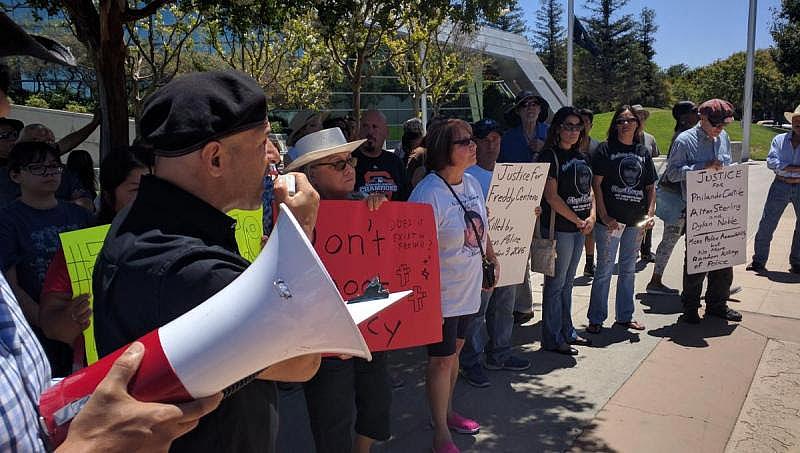What I learned about the intersection of health care and violence in Calif.’s Central Valley

Photo: Jeffrey Hess/KVPR
When I decided to apply for the California Fellowship, I sent an ambitious pitch attempting to make a connection between police violence and its health impacts on the communities they cover. My thinking was influenced by the white-hot coverage of police use of force that had dominated news coverage in 2015 and 2016.
Initially, my pitch was rejected. That leads to one of my first lessons, which is not abandoning an idea if it doesn’t immediately resonate with colleagues and coworkers. So, I kept the pitch at the front of my mind, intending to do the stories anyway. Much to my good fortune, I was later offered a fellowship slot if I agreed to broaden the scope of the project to look at other health issues related to community violence. I wound up reporting on not just how the lack of health care can result in deadly encounters with police, but how living in a violent community, where police encounters are common, can result in health conditions like toxic stress. I also reported on the mental health consequences of these violent interactions on the officers themselves.
Along the way, I learned several lessons.
The first lesson is to do ample pre-reporting to determine if there is a story there in the first place. It is important to be as flexible as possible and not try to force a story into a pre-conceived hypothesis. It can be tempting to latch onto an idea for too long. For this series in particular, I knew that attempting to draw a connection between violence and health care would be difficult. There are a great many contributing factors that lead to violence and access to health care might be one, but the problem is how to make that case. More complete pre-reporting would have revealed some of the pitfalls of trying to make the connection between violence and health more clear and sharpened the focus of the series.
The second lesson is related to the first. As I interviewed my sources the thrust of the story drew me away from health care and toward a more criminal justice story. Sometimes, that meant I would miss critical questions I should have asked of my subject or that I was not talking to the “right” people. There is nothing wrong with follow-up reporting, based on what’s learned during these interviews. In fact, I have subsequently written stories based on those interviews. But in this case, if I had a more clear understanding of the project’s root idea through pre-reporting I would have been able to more clearly explain my thinking, keep it focused on health care, and ensure I am talking to the most knowledgeable people. Doing so would have made the connection of violence and health care stronger. At the same time, it is vital to not attempt to shoehorn a story into a box if one doesn’t exist.
The third lesson is the importance of drawing strong connecting lines between different ideas. Doing thorough pre-reporting and having a clear focus means a reporter can build a strong foundation for the reports. This helps in a number of ways. It helps with the literal structure and writing of the story. It makes the series key concepts more clear and easy to follow for a listener, which is vital in radio. And it narrows the scope of a big topic to ensure that a reporter is talking to the right people and not spending time chasing ghosts or pursuing a flawed premise. If a reporter has a clear understanding of a story, and there is in fact a story there, having a strong organization plan can really elevate the report’s quality.
One final reporting challenge I ran into was the reluctance of some subjects to speak with me. This was most acute among law enforcement officials who said they felt under siege because of recent national and local coverage of officer-involved shootings. I eventually had success after asking numerous times and working to build trust with subjects. The problem also occurred among non-police subjects. But when I myself had a more firm understanding of the story, I was more capable of communicating that to subjects, who in turn were more open to an interview.
I still believe that these are important stories to people in my coverage area. Law enforcement agencies in the Central Valley are statistically more likely to use force than in other areas of the state and nation. A number of communities here also face deep and pervasive violence. There is a strong connection between those issues and the mental and physical health of people who live there. Taken individually, these stories aren’t necessarily “new.” However, I believe my approach in looking at them together was unique, especially given the current national dialogue.
Taking on bold and ambitious projects is hard and sometimes it ends in failure. But that is not always a bad thing. For me, it was an opportunity to see my weaknesses and push myself to take them head on and improve on my reporting going forward.
Read Jeffrey Hess’ fellowship stories here.

